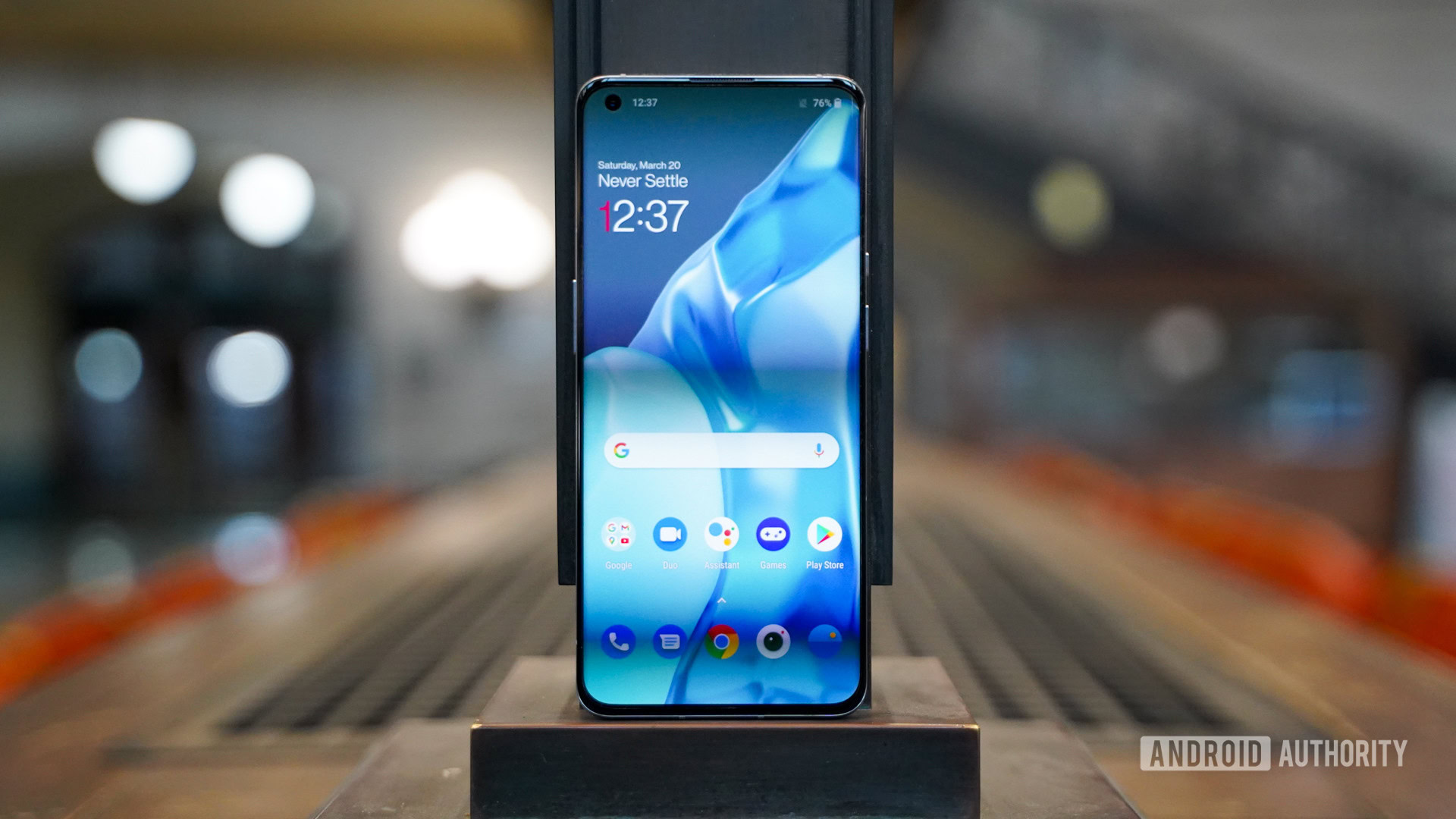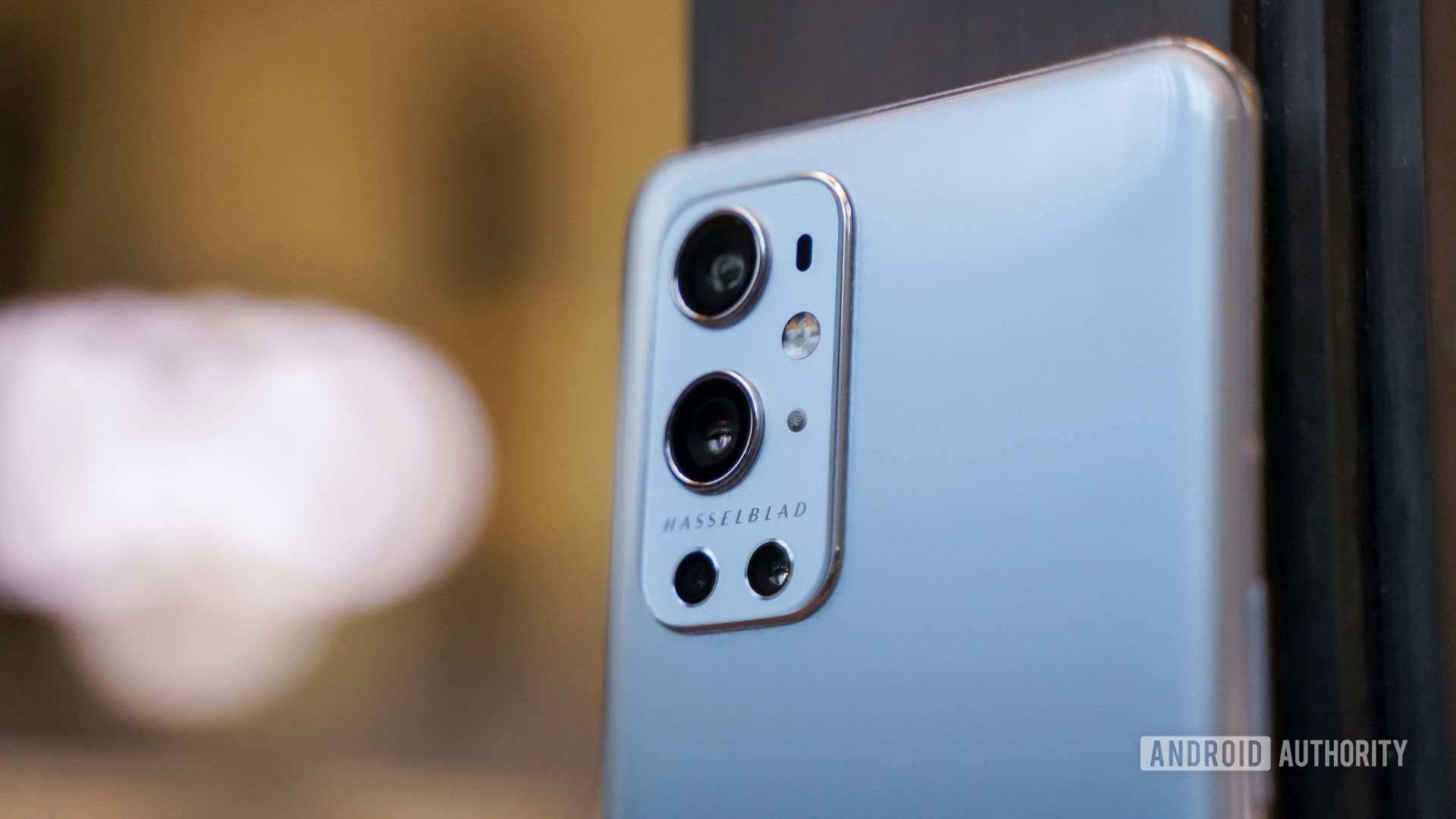Affiliate links on Android Authority may earn us a commission. Learn more.
Hey OnePlus, it was never about the crime, it was about the cover-up
Gaming the system through boosted benchmarks, hardware compromises, or software tricks has become commonplace over the last few years. However, the latest revelation concerning the OnePlus 9 and OnePlus 9 Pro is still startling.
The Shenzhen-based OPPO sub-brand has been (again) caught red-handed, cheating on its performance scores. What’s different, though, is that, unlike other cases, OnePlus hasn’t been boosting benchmark scores. Instead, the company has been throttling down apps on the OnePlus 9 Pro to preserve battery life.
In a statement issued after Anandtech discovered this shady behavior, the company said it was indeed “optimizing” performance by identifying popular apps and matching their power requirement to appropriate cores. Additionally, OnePlus confirmed the situation might affect some benchmarks but said the goal was to improve device performance for users, not cheating.
Popular benchmarks like Geekbench have since delisted the OnePlus 9 Pro for cheating since the benchmark performance is not indicative of actual real-world capabilities.
The long and short of it? OnePlus maintains a system-wide app list that relegates most of the top 300 apps on the Play Store to the significantly slower Cortex A55 cores on the OnePlus 9 Pro. That’s a phone customers have splurged over $1,000 on for its promise of cutting edge specs and superior speed.
What's worse, telling a lie or withholding information?
This is not the first time we’ve seen smartphone brands take an underhanded route towards controlling power, thermal output, or battery consumption. Last year, Apple ponied up $113 million to settle lawsuits over its practice of slowing down phones to ensure longer battery life. Except, Apple slowed down old phones to increase their lifespan. Meanwhile, the OnePlus 9 and OnePlus 9 Pro are OnePlus’ latest and greatest, top-of-the-line smartphones.

The problem doesn’t necessarily lie in slowing down apps in the name of optimization. Personally, I am okay with that trade-off.
Before you bring out the pitchforks, hear me out.
Launched in March, the OnePlus 9 Pro has been on the market for a few months now. Our OnePlus 9 Pro review waxed lyrical about the phone’s performance, though we did point out that it had a tendency to heat up and that battery life wasn’t entirely up to scratch. Meanwhile, scouting Reddit or the OnePlus forums, you’d be hard-pressed to find people complaining about everyday performance.
There is no indication that the OnePlus 9 Pro is under any form of performance throttling to the naked eye. In fact, I’ve been using the phone as my daily driver since launch, and not once have I thought that performance was lacking. For context, I’m the guy with over 40 Chrome tabs and 300+ apps on my phone.
Does throttling matter when you can't even notice it?
Does throttling mean anything when there is no perceptible loss of performance? If anything, it’s a sign of OnePlus effectively optimizing the phone for its users. But that doesn’t mean I am okay with the deception.
I could talk about OnePlus’ incompetence at adequately tuning the phone. In a virtual watercooler chat, Android Authority’s Robert Triggs chimed in that the Snapdragon 888’s Cortex X1 chip was literally designed to handle heavy transient loads. Power up, finish off the task, power down. Simple in theory but not so much in practice, if OnePlus’ solution is to be considered.
Read more: Qualcomm Snapdragon 888 deep dive: Everything you need to know
OnePlus’ “solution” to high battery consumption is, simply put, a cop-out. Instead of putting in the work and resources required to achieve actual optimization, the company’s choice to reduce power to apps is cheeky, to put it mildly. It reeks of ineptitude. It’s almost as if OnePlus had a last-minute revelation that it couldn’t make the phone work as it should and took the quickest route out.
The whole affair speaks of the industry’s excessive focus on hardware — slap in the fastest chip you can buy and call it a day. Bring on the marketing. But a phone is more than the sum of its parts, and software is equally as, if not more important than the silicon it runs on.
It’s easy to build a fast phone; it’s easy to build a long-lasting phone. But a phone that balances both? That’s hard, and the OnePlus 9 Pro is evidence of that.

Hiding away the gimped performance also raises the question: What else did the OnePlus 9 Pro skimp out on? Did it lack heat dissipation, or is Oxygen OS just too unoptimized to balance performance and power? And what about that new-fangled LTPO display that was supposed to reduce power consumption?
It could just be poor decision-making, which wouldn’t be a surprise coming from the team that shipped a phone with X-Ray vision out of the box. A feature that it had to disable in retail units post-launch.
It's not the crime, it's the cover-up.
The bigger issue here is the lack of transparency and control. OnePlus concealed the troubling fact that it was not letting users take full advantage of a phone advertised on the merits of its performance.
After all, it suggests you don’t need the kind of power these chipsets are outputting. But in that case, why use the expensive Snapdragon 888 at all instead of using a cheaper SoC and passing the savings on to customers?
Worse still, the company deliberately opted out of throttling benchmark apps, further adding to the smoke and mirrors. Such deception sets a bad precedent for other brands, and OnePlus needs to be called out.
It also raises questions about longevity. So far, we don’t know if OnePlus is using a constantly updated list of target apps. What happens two years down the line? As apps get more sophisticated, they will predictably need more power. Does OnePlus expect buyers to replace phones every two years? You can see how quickly the conversation can descend into the forced obsolescence rabbit hole.
For a phone that starts at a whopping $1,000, it is also mind-boggling how little control you have over it. Inevitably, as smartphone processors get more powerful, they will run hotter and heavier. But here’s the kicker: Phones like the Samsung Galaxy S21 Ultra manage just fine with power profiles that let you tweak for performance or downclock for battery life. It really is that simple.

Settling for less seems to have become a recurring theme with OnePlus phones, with its ever-widening gulf between marketing and product reality. This latest deception is just another in a string of disappointments, following the much-vaunted Hasselblad partnership, which helped OnePlus catch up to an extent but did not deliver standout camera performance. The decision to throttle down performance comes as another slap in the face of the enthusiasts and fans that helped build the brand.
OnePlus' deception is a cautionary tale of never taking brands at face value.
Do I expect OnePlus to do right by its customers? No, not really. The company has made it evident that mid-range, mainstream phones are its future. But the deception tells a cautionary tale of never taking marketing at face value. After all, it is a business, and businesses optimize for the lowest cost.
Balancing full-throttle performance with battery life and heat would have required a lot more resources, so OnePlus took a shortcut. Considering how almost nobody noticed the deception, it clearly worked. By the time you really started noticing issues, OnePlus would be ready to sell you another phone.
What about you? Would you buy a phone knowing that you aren’t really getting the hardware you paid top dollar for?